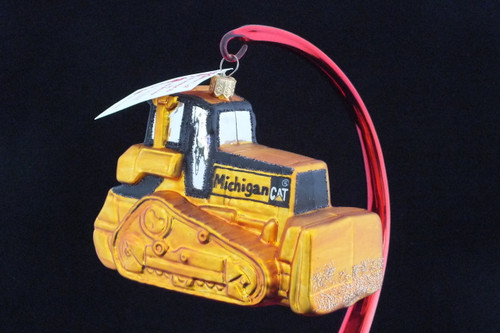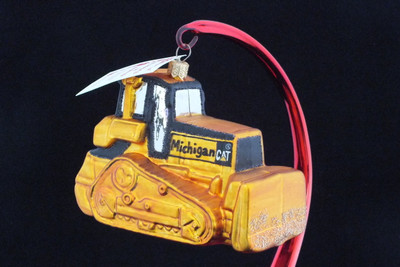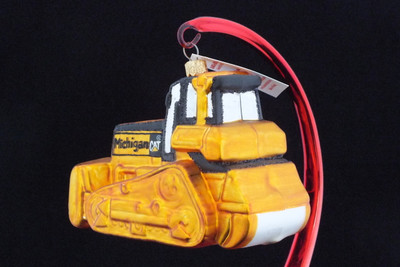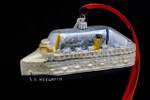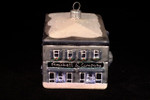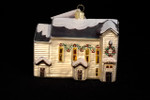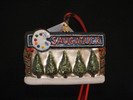 Loading... Please wait...
Loading... Please wait...Categories
We invite you to enjoy your time as you browse our extensive collection of "Mouth-Blown, Hand-Painted" glass ornaments Hand-Crafted in Poland by some of the world's most renowned Artisans.
Since 1996 we have been offering the highest quality custom glass ornaments that are handcrafted in the "Old World" European style for you to enjoy today and promise many tomorrows, as they become family heirlooms. Multi dimensional glass ornaments is our specialty: for over 29 years we have partnered with Schools, Churches, Businesses and Nonprofit organizations to achieve their fundraising goals. Each piece in our collection provide a one-of-a-kind collectable piece of art that we believe you will want to display not only at Christmas, but throughout the year as well. Our custom ornaments make a perfect gift that is sure to be enjoyed today, and promised many tomorrows. If you wish to discuss fundraising opportunites or wholesale pricing, please call. (313) 506-0664 Welcome Aboard!
New Products
-
$43.00

-
$58.00

-
$60.00

-
$79.00

-
$41.00

Product Description
History
The first bulldozers were adapted from Holt farm tractors that were used to plow fields. The versatility of tractors in soft ground for logging and road building contributed to the development of the armoured tank in World War I.
In 1923, a young farmer named James Cummings and a draftsman named J. Earl McLeod made the first designs for the bulldozer. A replica is on display at the city park in Morrowville, Kansas where the two built the first bulldozer. On December 18, 1923, Cummings and McLeod filed U.S. patent #1,522,378 that was later issued on January 6, 1925 for an "Attachment for Tractors."
By the 1920s, tracked vehicles became common, particularly the Caterpillar 60. Rubber-tired vehicles came into use in the 1940s. To dig canals, raise earth dams, and do other earth-moving jobs, these tractors were equipped with a large thick metal plate in front. (The blade got its curved shape later). In some early models the driver sat on top in the open without a cabin. There are three main types of bulldozer blades: a U-blade for pushing and carrying dirt relatively long distances, a straight blade for "knocking down" and spreading piles of dirt, and a brush rake for removing brush and roots. These attachments (home-built or built by small equipment manufacturers of attachments for wheeled and crawler tractors and trucks) appeared by 1929.
Widespread acceptance of the bull-grader does not seem to appear before the mid-1930s. The addition of power down-force provided by hydraulic cylinders instead of just the weight of the blade made them the preferred excavation machine for large and small contractors alike by the 1940s, by which time the term "bulldozer" referred to the entire machine and not just the attachment.
Over the years, bulldozers got bigger and more powerful in response to the demand for equipment suited for ever larger earthworks. Firms like Caterpillar, Komatsu, Case, JCB, Euclid, Allis Chalmers, Liebherr, LiuGong, Terex, Fiat-Allis, John Deere, BEML, XGMA and International Harvester manufactured large tracked-type earthmoving machines. R.G. LeTourneau and Caterpillar manufactured large rubber tired bulldozers.
Bulldozers grew more sophisticated as time passed. Improvements include drivetrains analogous to (in automobiles) an automatic transmission instead of a manual transmission such as the early Euclid C-6 and TC-12 or Model C Tournadozer, blade movement controlled by hydraulic cylinders or electric motors instead of early models' cable winch/brake, and automatic grade control. Hydraulic cylinders enabled the application of down force, more precise manipulation of the blade and automated controls.
A more recent innovation is the outfitting of bulldozers with GPS technology, such as manufactured by Topcon Positioning Systems, Inc., Trimble Inc, or Leica Geosystems for precise grade control and (potentially) "stakeless" construction. As a response to the many, -and often varying claims about these systems, The Kellogg Report published in 2010 a detailed comparison of all the manufacturers' systems, evaluating more than 200 features for dozers alone.
The best-known maker of bulldozers is probably Caterpillar in the US, which earned its reputation by making tough, durable, reliable machines. Komatsu, JCB and John Deere are present-day competitors. Although these machines began as modified farm tractors, they became the mainstay for big civil construction projects, and found their way into use by military construction units worldwide. The best-known model, the Caterpillar D9, was also used to clear mines and demolish enemy structures. This information has been copied from Wikipedia, for more information please visit: http://en.wikipedia.org/wiki/Bulldozer
Klassics by Kurtis is proud to have partnered with the Michigan Cat Company to provide Custom Glass Ornaments which replicated a bulldozer. This ornament measures: 3 1/2H X 5W X 2 3/4D MOUTH BLOWN AND HAND PAINTED IN POLAND
Add to Wish List
You Recently Viewed...
RETAIL CUSTOMERS ENJOY FREE SHIPPING
WE SHIP ONLY
USPS or UPS






